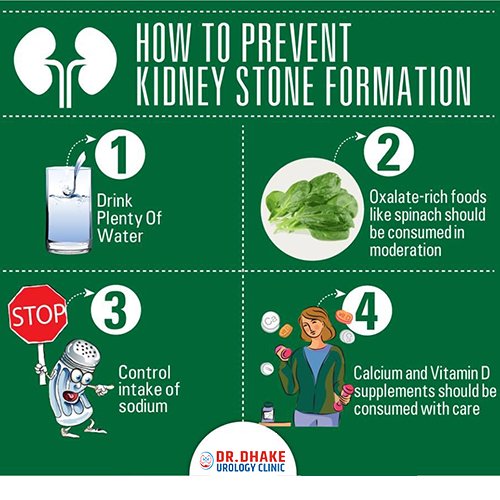Imagine having to deal with the excruciating pain of kidney stones. Ouch, right? Well, lucky for you, there’s a potential solution: low-oxalate diets. These diets have been gaining popularity as a way to prevent kidney stone formation. By limiting your intake of oxalate-rich foods, you can reduce the risk of developing these painful stones. But before you embark on this dietary journey, it’s important to understand the ins and outs of low-oxalate diets and how they can help prevent kidney stones.
Understanding Kidney Stones
What are kidney stones?
Kidney stones are hard crystalline structures that can form in the kidneys. They are made up of various substances, such as calcium, oxalate, and uric acid. These stones can vary in size, ranging from as small as a grain of sand to as large as a golf ball.
Causes of kidney stones
There are several factors that can contribute to the formation of kidney stones. One of the main causes is an imbalance in the substances that make up the stones, such as calcium, oxalate, and uric acid. Other factors include dehydration, certain medical conditions like urinary tract infections, and a family history of kidney stones.
Types of kidney stones
Kidney stones can be classified into different types based on their composition. The most common type is calcium stones, which are formed when there is too much calcium in the urine. Other types include uric acid stones, which are formed from excess uric acid, and struvite stones, which are associated with urinary tract infections.
Risk factors for kidney stones
Several risk factors can increase the likelihood of developing kidney stones. These include a diet high in oxalate-rich foods, such as spinach and rhubarb, as well as a low fluid intake. Other risk factors include obesity, certain medical conditions like inflammatory bowel disease, and certain medications that can increase the risk of stone formation.
Introduction to Low-Oxalate Diets
What is oxalate?
Oxalate is a naturally occurring compound found in many foods. It is also produced by the body as a byproduct of metabolism. When oxalate levels in the urine are high, it can combine with calcium to form kidney stones. Thus, reducing oxalate intake through diet can help prevent the formation of kidney stones.
Oxalate-rich foods to avoid
To follow a low-oxalate diet, it is important to be aware of the foods that are high in oxalate. Some of the foods that are commonly high in oxalate include spinach, rhubarb, beets, nuts, and chocolate. It is recommended to limit the consumption of these foods to reduce oxalate intake.
Benefits of low-oxalate diets
Low-oxalate diets have been shown to be effective in reducing the risk of kidney stone formation. By limiting the intake of high-oxalate foods, the amount of oxalate excreted in the urine can be reduced, thereby decreasing the chances of stone formation. Additionally, a low-oxalate diet can help manage other medical conditions, such as hyperoxaluria.
Who can benefit from low-oxalate diets?
Low-oxalate diets are primarily recommended for individuals who have a history of kidney stones or are at risk of developing them. People with certain medical conditions, such as hyperoxaluria or calcium oxalate kidney stones, may benefit from following a low-oxalate diet. It is important to consult with a healthcare professional or a registered dietitian before making any major dietary changes.
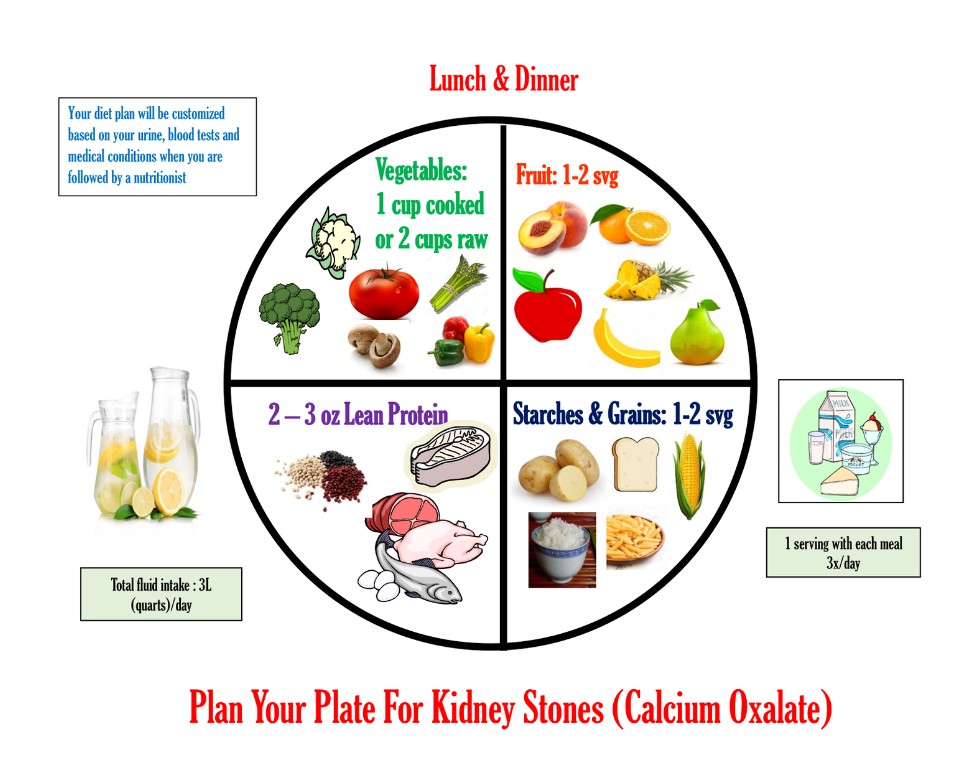
This image is property of www.kidney.org.
The Role of Diet in Kidney Stone Prevention
Effects of diet on kidney stone formation
Diet plays a crucial role in kidney stone formation. Certain dietary factors can increase the risk of stone formation, while others can help prevent it. By understanding the impact of different nutrients and food choices on kidney stone formation, individuals can make informed dietary decisions to minimize the risk.
Link between oxalate intake and kidney stone formation
Oxalate intake has a significant impact on kidney stone formation. When oxalate levels in the urine are high, it increases the likelihood of calcium oxalate stone formation. Therefore, reducing oxalate intake through diet is an important strategy for preventing the formation of these stones.
Other dietary factors affecting kidney stone risk
In addition to oxalate, there are other dietary factors that can affect the risk of kidney stone formation. High intakes of sodium, animal protein, and refined sugars have been associated with an increased risk of stone formation. On the other hand, a diet rich in fruits, vegetables, whole grains, and adequate fluid intake can help reduce the risk.
Importance of hydration
Maintaining proper hydration is crucial for kidney stone prevention. Drinking an adequate amount of water helps dilute the urine and prevents the buildup of stone-forming substances. It is important to drink enough fluids throughout the day, especially in hot weather or during physical activity, to promote urine production and minimize the risk of stone formation.
Identifying High-Oxalate Foods
Common foods high in oxalate
There are several common foods that are high in oxalate and should be consumed in moderation on a low-oxalate diet. Some examples include spinach, rhubarb, beet greens, almonds, and cocoa. Other high-oxalate foods include starfruit, kiwi, and black tea. It is important to be aware of these foods when planning meals on a low-oxalate diet.
Hidden sources of oxalate
Oxalate can also be found in many processed foods and condiments. Foods like tomato products, soy products, and even potato chips can contain significant amounts of oxalate. It is important to read food labels carefully to identify hidden sources of oxalate and make informed decisions about food choices.
Ways to measure oxalate content
While it is not practical to measure the oxalate content of every food, there are databases available that provide estimates of oxalate content in various foods. These databases can be used as a resource to determine the oxalate content of common foods and guide meal planning on a low-oxalate diet.
Reading food labels for oxalate levels
Reading food labels can be a helpful way to identify foods that may be high in oxalate. Look for ingredient lists that contain high-oxalate foods like spinach, almonds, or chocolate. Additionally, some products may indicate the oxalate content per serving on the label, making it easier to make informed choices.
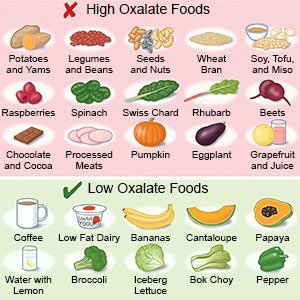
This image is property of www.drugs.com.
Designing a Low-Oxalate Diet
Gradual reduction of oxalate intake
When starting a low-oxalate diet, it is generally recommended to make gradual reductions in oxalate intake. Sudden and drastic changes to the diet can be difficult to maintain and may not be sustainable in the long term. By gradually reducing intake and making small, manageable changes, individuals can successfully transition to a low-oxalate diet.
Balancing nutrient needs
While following a low-oxalate diet, it is important to ensure that all nutrient needs are met. This includes maintaining a balanced intake of carbohydrates, proteins, and fats, as well as consuming a variety of fruits and vegetables for essential vitamins and minerals. It may be helpful to work with a registered dietitian to ensure proper nutrient balance while on a low-oxalate diet.
Meal planning tips
Meal planning is an essential component of a successful low-oxalate diet. It helps ensure that meals are well-balanced, nutritious, and low in oxalate. When planning meals, consider incorporating low-oxalate foods, such as apples, cucumbers, and lean proteins, while limiting high-oxalate foods. Experimenting with different recipes and cooking methods can also add variety to the diet.
Important cooking methods and techniques
Some cooking methods and techniques can help reduce the oxalate content of certain foods. For example, boiling vegetables can help leach out some of the oxalate, making them lower in oxalate compared to raw or steamed versions. Furthermore, pairing high-oxalate foods with calcium-rich sources, such as dairy products, can help bind the oxalate and prevent its absorption.
Foods to Include in a Low-Oxalate Diet
Low-oxalate fruits
When following a low-oxalate diet, it is still important to include a variety of fruits for their nutritional benefits. Some examples of low-oxalate fruits that can be enjoyed include apples, pears, peaches, melons, and berries. These fruits are not only delicious but also provide essential vitamins and minerals without contributing excessive oxalate.
Vegetables suitable for a low-oxalate diet
While some vegetables are high in oxalate and should be limited, there are plenty of low-oxalate options to choose from. Vegetables like lettuce, cucumbers, bell peppers, carrots, and zucchini can be incorporated into a low-oxalate diet. These vegetables provide important nutrients while minimizing oxalate intake.
Protein sources with low oxalate content
Protein is an essential nutrient that should be included in a low-oxalate diet. Fortunately, there are several protein sources that are low in oxalate. These include lean meats like chicken and turkey, fish such as salmon and trout, and legumes like lentils and chickpeas. Including a variety of these protein sources can provide necessary nutrients without increasing oxalate intake.
Whole grains and low-oxalate alternatives
When it comes to grains, it is important to choose options that are low in oxalate. Whole grains like oats, quinoa, and rice are generally lower in oxalate compared to refined grains. By opting for whole grains and low-oxalate alternatives like millet or buckwheat, individuals can still enjoy a wide range of delicious and nutritious grain-based foods while on a low-oxalate diet.
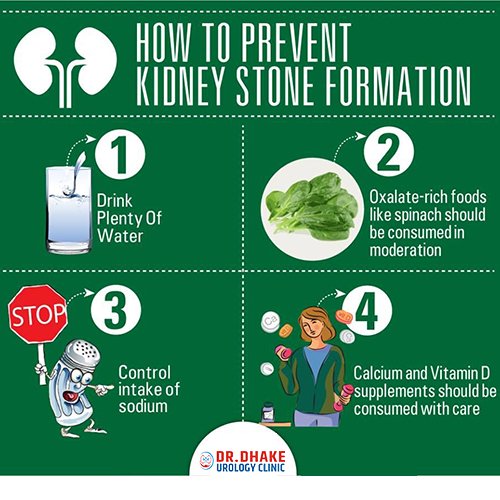
This image is property of www.drrajeshdhakeurologist.com.
Substitutes for High-Oxalate Foods
Alternative options for high-oxalate vegetables
For individuals who enjoy high-oxalate vegetables but want to limit their oxalate intake, there are alternative options available. For example, replacing spinach with lower-oxalate greens like kale or Swiss chard can help provide similar flavors and textures while reducing oxalate content. It may take some experimentation to find suitable substitutes that meet individual preferences.
Low-oxalate alternatives to dairy products
Dairy products can be a valuable source of calcium, which can help prevent the absorption of oxalate in the digestive tract. For those who need to limit oxalate intake but still want to ensure adequate calcium intake, there are low-oxalate alternatives to consider. Options like lactose-free milk, yogurt made from rice or coconut milk, and certain cheeses may be suitable alternatives for individuals following a low-oxalate diet.
Healthy beverages for a low-oxalate diet
Beverages are an important consideration in a low-oxalate diet, as certain drinks can contribute to oxalate intake. It is important to avoid beverages like black tea, which is high in oxalate, and to opt for low-oxalate alternatives instead. Examples of low-oxalate beverages include water, herbal teas, and certain fruit juices. Staying well-hydrated with these options can help minimize the risk of stone formation.
Snack options for kidney stone prevention
Snacking can be a challenge on a low-oxalate diet, as many common snack foods are high in oxalate. However, there are still plenty of delicious and nutritious low-oxalate snack options available. Some ideas include raw carrots and bell peppers with hummus, fresh fruit, low-oxalate nuts like almonds or cashews in moderation, and low-oxalate yogurt or cheese.
Meal Ideas and Recipes
Breakfast options for a low-oxalate diet
Starting the day with a nutritious and low-oxalate breakfast is essential. Some breakfast ideas for a low-oxalate diet include oatmeal topped with low-oxalate fruits like sliced apples or berries, scrambled eggs or omelets with low-oxalate vegetables like bell peppers and spinach in moderation, or yogurt with granola made from low-oxalate grains. These options provide a balanced and satisfying start to the day.
Lunch and dinner recipes
When it comes to lunch and dinner, there are numerous low-oxalate recipes to choose from. Some examples include grilled chicken or fish with roasted vegetables like carrots, zucchini, and broccoli, stir-fried tofu or shrimp with low-oxalate vegetables, or quinoa salad with cucumber, grape tomatoes, and feta cheese in moderation. These recipes offer a combination of flavors and nutrients while keeping oxalate levels in check.
Snack and dessert ideas
Snacks and desserts can still be enjoyed on a low-oxalate diet, albeit with some modifications. Instead of reaching for high-oxalate snacks like potato chips or chocolate, opt for low-oxalate alternatives. Snack ideas include raw veggies with low-oxalate dips, low-oxalate nuts, or air-popped popcorn. For desserts, consider fruit-based options like fresh berries with whipped cream or a low-oxalate fruit sorbet.
Sample meal plans
Creating a sample meal plan for a low-oxalate diet can be helpful for individuals looking to get started. Here is an example of a day’s worth of meals on a low-oxalate diet:
- Breakfast: Oatmeal topped with sliced apples and a sprinkle of cinnamon.
- Snack: Carrot sticks with hummus.
- Lunch: Grilled chicken salad with mixed greens, cucumbers, cherry tomatoes, and a lemon vinaigrette.
- Snack: Low-oxalate yogurt with a handful of low-oxalate nuts.
- Dinner: Baked salmon with steamed asparagus and quinoa.
- Dessert: Fresh berries with a dollop of whipped cream.
By incorporating a variety of low-oxalate foods into each meal, individuals can enjoy a well-balanced and kidney stone-friendly diet.

This image is property of cdn-dfgdf.nitrocdn.com.
Supplements and Medications
Calcium supplements and kidney stones
Calcium supplements are often recommended for individuals at risk of kidney stones, as they can help bind to oxalate in the digestive tract and prevent its absorption. However, it is important to work with a healthcare professional to determine the appropriate dosage and monitor calcium levels, as excessive calcium intake can also contribute to stone formation.
Vitamin C supplementation
High-dose vitamin C supplementation has been associated with an increased risk of kidney stone formation in some individuals. This is because vitamin C can be converted into oxalate in the body. It is important to discuss any vitamin C supplements with a healthcare professional to ensure they are safe for individuals at risk of kidney stones.
Supplements to consider
In addition to calcium and vitamin C supplementation, there are other supplements that may be beneficial for kidney stone prevention. These include magnesium, which can help prevent the formation of calcium oxalate stones, and citrate, which can help increase urine pH and inhibit stone formation. It is important to consult with a healthcare professional before starting any new supplements.
Prescription medications for stone prevention
In certain cases, prescription medications may be necessary to help prevent kidney stone formation. These medications can help regulate urine pH, reduce the production of stone-forming substances, or inhibit the growth of bacteria associated with stone formation. It is essential to work with a healthcare professional to determine the appropriate medication and dosage for individual circumstances.
Lifestyle Adaptations and Additional Tips
Maintaining a healthy weight
Maintaining a healthy weight is important for kidney stone prevention. Obesity has been linked to an increased risk of stone formation. By adopting a balanced diet, engaging in regular physical activity, and managing portion sizes, individuals can work towards achieving and maintaining a healthy weight, which can help reduce the risk of kidney stones.
Physical activity and its impact on kidney stones
Regular physical activity has been shown to have a positive impact on kidney stone prevention. Exercise can help promote healthy weight management, improve overall kidney function, and reduce the risk of certain medical conditions associated with stone formation. Engaging in aerobic exercise, strength training, and activities that promote good hydration can all contribute to kidney stone prevention.
Reducing sodium intake
High sodium intake has been shown to increase the risk of stone formation. This is because sodium can increase calcium excretion in the urine, leading to the formation of calcium oxalate stones. By reducing sodium intake and opting for low-sodium food choices, individuals can help minimize the risk of stone formation. Reading food labels and choosing fresh or minimally processed foods can aid in reducing sodium intake.
Managing stress and other lifestyle factors
Stress and certain lifestyle factors can also impact kidney stone formation. Chronic stress has been associated with an increased risk of stone formation, possibly due to changes in urinary composition caused by stress hormones. Additionally, certain medications, such as diuretics or antacids, can affect kidney stone risk. Managing stress through techniques like relaxation exercises, mindfulness, and seeking support can help reduce the risk of stone formation.
In conclusion, understanding kidney stones and the role of diet in prevention is crucial for individuals at risk of stone formation. Following a low-oxalate diet, which focuses on reducing oxalate intake through food choices, can significantly decrease the risk of kidney stone formation. By incorporating low-oxalate foods, making gradual dietary changes, and seeking guidance from healthcare professionals and registered dietitians, individuals can successfully adopt a kidney stone-friendly lifestyle that promotes overall health and well-being.
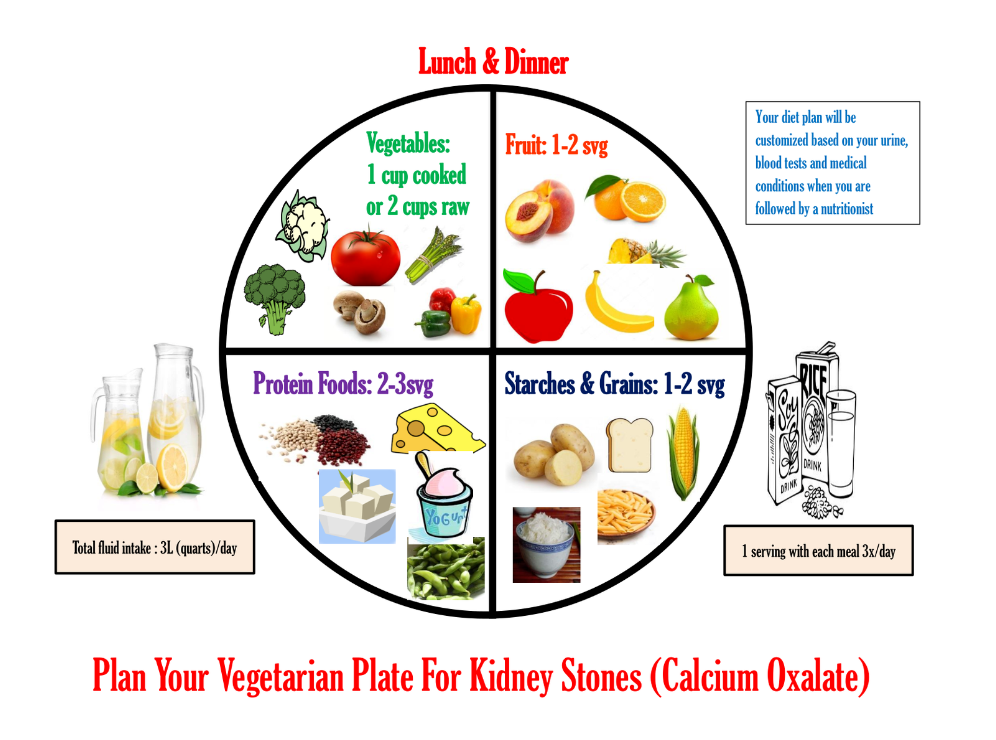
This image is property of www.kidney.org.

